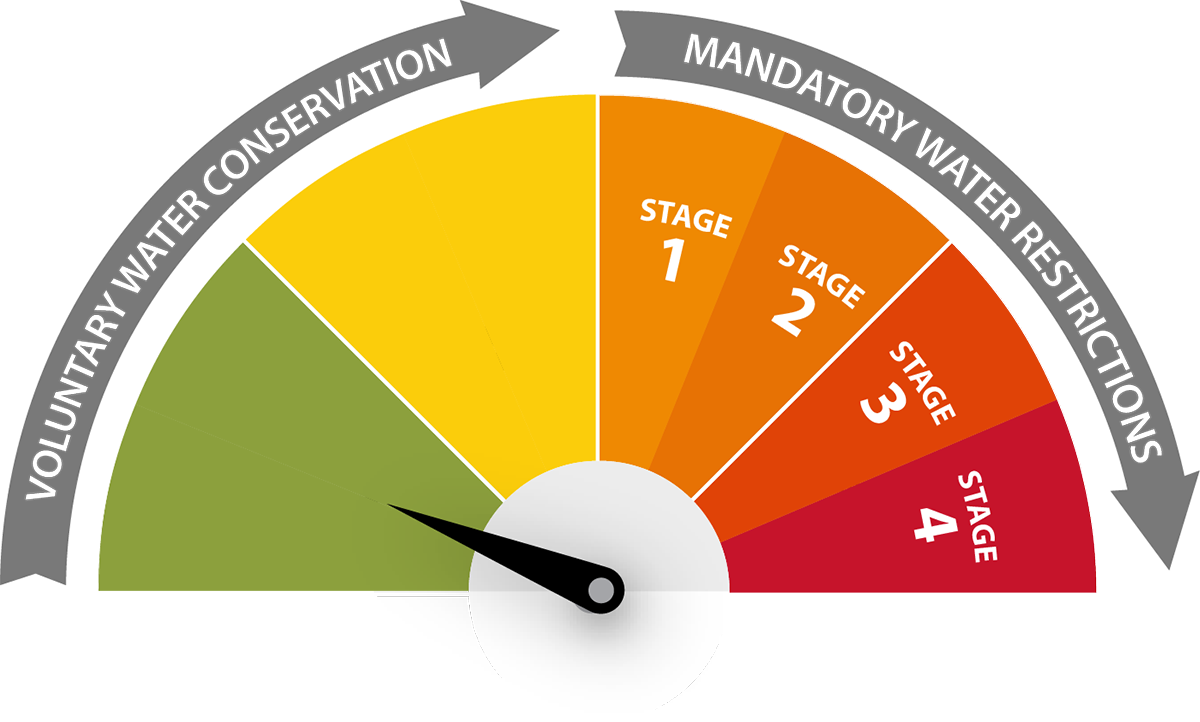Drought
Current conditions
Updated September 25, 2025
As we head into fall, Calgary has a stable water supply to carry us through the winter.
What we’re seeing
- Bow watershed reservoir storage upstream of Calgary is below normal for this time of year. Glenmore Reservoir storage is normal.
- Bow River flows in Calgary are below normal and and Elbow River flows in Calgary remain within the normal range for this time of year.
A Year in Review – Water Supply in the Bow and Elbow Rivers
The Calgary region along with southern Alberta started the year with extremely dry conditions, caused by a low snowpack that melted off quickly in the spring. Significant rainfall throughout July and early August in large portions of our watersheds and lower seasonal temperatures really improved river flows, Glenmore reservoir levels and soil moisture.
Although late August through September brought extended periods of heat and very little rain, Calgarians continued to use water wisely throughout the late summer.
We’re seeing sufficient water supply conditions heading into late fall and winter. We will continue to monitor conditions in the Bow and Elbow Basins over the winter, keeping a close eye on mountain snowpack as it develops. Our next update will be provided in March 2026.
We're updating the Water Efficiency Plan and want your feedback
As part of Calgary's Drought Resilience Plan, we're updating the Water Efficiency Plan to help ensure a reliable and resilient water supply - now and for future generations.
Between November 17 and December 7, we want your thoughts about water use. Your input will help improve existing water conservation programs, shape new ones, and guide the rollout of a proposed outdoor watering schedule.
Top tips for saving water outdoors
More ways to save water

In your yard
During spring and summer, your water use can jump by 30 to 40 per cent because of outdoor watering activities. Prepare your yard for dry conditions and make it as water efficient as possible.
Learn about drought-tolerant native plants Get a rain barrel
At home
In Calgary, the average person uses about seven cubic metres (m3) or 7,000 litres of water per month.
Find out the biggest water users inside your home and get tips and actions to take to achieve significant water savings in your bathroom, kitchen and laundry area.
Saving water in your home
At work
Practicing water efficiency makes good business sense. It helps lower operating costs, saves energy and demonstrates responsible water use.
There are many ways businesses can conserve water. Learn how to lower your water use with sector specific tips, guides and resources.
Water efficiency for businesses Learn how to become a water managed siteMore information
-
An interactive map showing precipitation and river flows, water supply outlook and drought advisories.
-
Information about drought conditions across the province and actions undertaken by Alberta's government.



